-
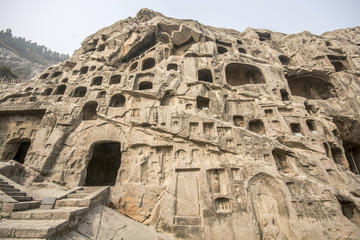 Longmen Grottoes
Longmen Grottoes Artists from the Northern Wei dynasty began carving in the Longmen Grottoes in the year 494 and continued to do so for some 200 years. Today, the UNESCO-listed caves contain more than 100,000 Buddhist statues and images—one of the best and last remaining collections of Buddhist ro
Longmen Grottoes
Longmen Grottoes Artists from the Northern Wei dynasty began carving in the Longmen Grottoes in the year 494 and continued to do so for some 200 years. Today, the UNESCO-listed caves contain more than 100,000 Buddhist statues and images—one of the best and last remaining collections of Buddhist ro
-
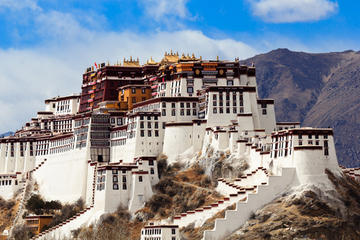 Lhasa
Lhasa Few places in the world inspire a sense of mystery and magic quite like the Tibetan capital of Lhasa. Closed off to outside visitors for generations, it has only been within the last 50 years that Tibet’s 12,000-foot (3,657.6-meter) capital has been accessible to a handful of lucky visitors.
Lhasa
Lhasa Few places in the world inspire a sense of mystery and magic quite like the Tibetan capital of Lhasa. Closed off to outside visitors for generations, it has only been within the last 50 years that Tibet’s 12,000-foot (3,657.6-meter) capital has been accessible to a handful of lucky visitors.
-
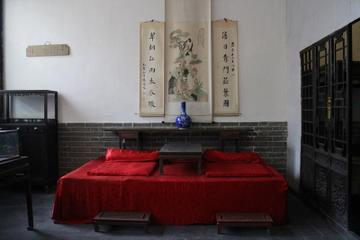 Kong Family Mansion
Kong Family Mansion Located in Qufu city, the Kong Family Mansion was the residence of the descendants of Confucius. Situated just to the east of the Confucius Temple, the Kong Family Mansion was the aristocratic home from where the family tended to the Confucian sites in Qufu. It was the largest
Kong Family Mansion
Kong Family Mansion Located in Qufu city, the Kong Family Mansion was the residence of the descendants of Confucius. Situated just to the east of the Confucius Temple, the Kong Family Mansion was the aristocratic home from where the family tended to the Confucian sites in Qufu. It was the largest
-
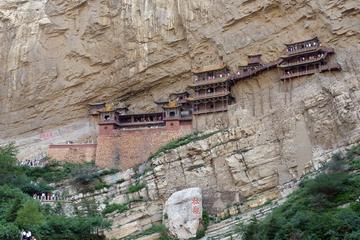 Hengshan Hanging Temple (Xuankong si)
Hengshan Hanging Temple (Xuankong si) The Hanging Temple is built into the cliff-side of the mighty Hengshan (Mount Heng) near Datong city in Shanxi Province. Held up by oak stilts slotted into holes chiselled out from the rock, the rest of the structure that supports the temple is hidden inside t
Hengshan Hanging Temple (Xuankong si)
Hengshan Hanging Temple (Xuankong si) The Hanging Temple is built into the cliff-side of the mighty Hengshan (Mount Heng) near Datong city in Shanxi Province. Held up by oak stilts slotted into holes chiselled out from the rock, the rest of the structure that supports the temple is hidden inside t
-
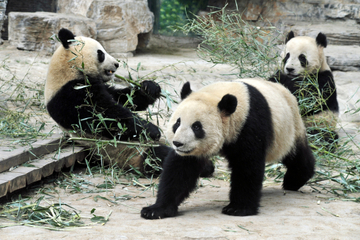 Shanghai Zoo (Shanghai Dongwu Yuan)
Shanghai Zoo (Shanghai Dongwu Yuan) The Shanghai Zoo (Shanghai Dongwu Yuan), one of the best zoological parks in China, is home to some 6,000 animals representing 600 species, many of them indigenous to China. Apart from the typical zoo favorites (giraffes, elephants and seals), the Giant Pandas a
Shanghai Zoo (Shanghai Dongwu Yuan)
Shanghai Zoo (Shanghai Dongwu Yuan) The Shanghai Zoo (Shanghai Dongwu Yuan), one of the best zoological parks in China, is home to some 6,000 animals representing 600 species, many of them indigenous to China. Apart from the typical zoo favorites (giraffes, elephants and seals), the Giant Pandas a
-
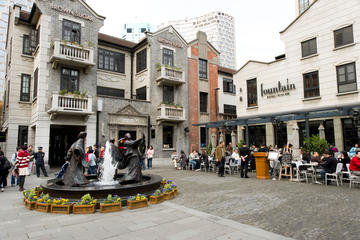 Shanghai Xin Tian Di
Shanghai Xin Tian Di Xin Tian Di (Xintiandi) is a sleekly restored area of Shanghai, where the more successful of the citys young come to play. Its also a popular strolling area for tourists, who like to check out the 19th century architecture. The district abounds in shikumen, stone houses that
Shanghai Xin Tian Di
Shanghai Xin Tian Di Xin Tian Di (Xintiandi) is a sleekly restored area of Shanghai, where the more successful of the citys young come to play. Its also a popular strolling area for tourists, who like to check out the 19th century architecture. The district abounds in shikumen, stone houses that
-
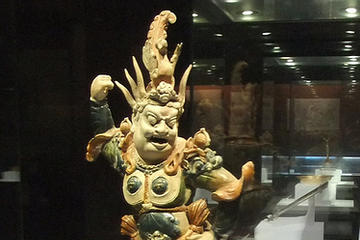 Shaanxi History Museum
Shaanxi History Museum The city of Xian is of inestimable significance in the history of China, having long been a cultural powerhouse as well as the capital of numerous dynasties. The Shaanxi History Museum, a modern building echoing classic Tang Dynasty architecture, offers a time-traveling tour
Shaanxi History Museum
Shaanxi History Museum The city of Xian is of inestimable significance in the history of China, having long been a cultural powerhouse as well as the capital of numerous dynasties. The Shaanxi History Museum, a modern building echoing classic Tang Dynasty architecture, offers a time-traveling tour
-
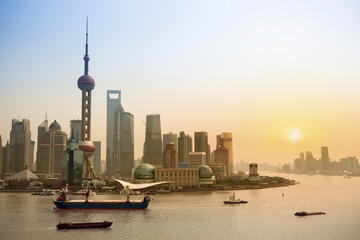 Huangpu River
Huangpu River The Huangpu River, extending over 71 miles (113 kilometers), flows through the middle of Shanghai’s, dividing the city into two parts – Pudong to the east and Puxi to the west. The port where the river empties into the East China Sea has now become the largest port in China and in 20
Huangpu River
Huangpu River The Huangpu River, extending over 71 miles (113 kilometers), flows through the middle of Shanghai’s, dividing the city into two parts – Pudong to the east and Puxi to the west. The port where the river empties into the East China Sea has now become the largest port in China and in 20
-
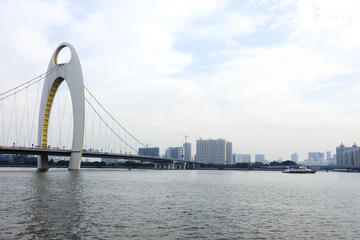 Pearl River
Pearl River The Pearl River stretches for 1,376 miles (2,214 kilometers) from Xi Jiang to the Pearl River Delta where it pours into the South China Sea. It’s the third longest river in China and the second largest by volume. According to local legend, the river got its name from a huge boulder in
Pearl River
Pearl River The Pearl River stretches for 1,376 miles (2,214 kilometers) from Xi Jiang to the Pearl River Delta where it pours into the South China Sea. It’s the third longest river in China and the second largest by volume. According to local legend, the river got its name from a huge boulder in
-
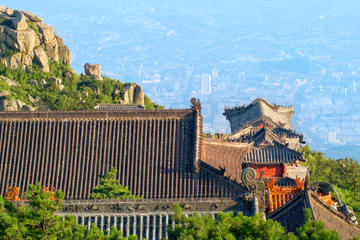 Mt Tai (Tai Shan)
Mt Tai (Tai Shan) Mount Tai (or Tai Shan) is a majestic mountain located in Shandong Province. It spans two cities – Tai’an and Jinan – and is the principal mountain among the five most significant in China. In 1987, Mount Tai was listed as a Cultural and Natural World Heritage Site and later in 2
Mt Tai (Tai Shan)
Mt Tai (Tai Shan) Mount Tai (or Tai Shan) is a majestic mountain located in Shandong Province. It spans two cities – Tai’an and Jinan – and is the principal mountain among the five most significant in China. In 1987, Mount Tai was listed as a Cultural and Natural World Heritage Site and later in 2
-
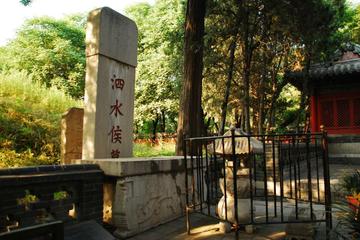 Cemetery of Confucius
Cemetery of Confucius The Cemetery of Confucius contains the tomb erected in memory of Confucius, along with the remains of more than 100,000 of his descendants. Situated just north of the sage’s birthplace of Qufu in Shandong Province, the cemetery sits around two kilometers from the Confucius Te
Cemetery of Confucius
Cemetery of Confucius The Cemetery of Confucius contains the tomb erected in memory of Confucius, along with the remains of more than 100,000 of his descendants. Situated just north of the sage’s birthplace of Qufu in Shandong Province, the cemetery sits around two kilometers from the Confucius Te
-
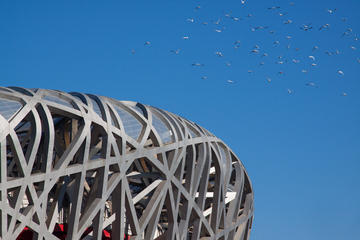 Olympic Green (Olympic Park)
Olympic Green (Olympic Park) In just a few years since Beijing hosted the 2008 Olympic Games, the structures built within the Olympic Green (Olympic Park) have become just as representative of the Chinese capital as the Forbidden City or the Great Wall. While the Olympic Green houses half a dozen
Olympic Green (Olympic Park)
Olympic Green (Olympic Park) In just a few years since Beijing hosted the 2008 Olympic Games, the structures built within the Olympic Green (Olympic Park) have become just as representative of the Chinese capital as the Forbidden City or the Great Wall. While the Olympic Green houses half a dozen
-
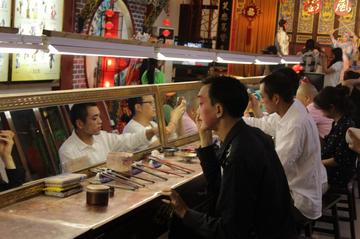 Sichuan Opera House
Sichuan Opera House For more than 100 years dancers, singers and other performers have been presenting traditional Sichuan operas for travelers and tourists seeking a true cross cultural experience. Divided into two distinct spaces, the VIP Chinese Opera House and the Liyuan Opera House, Sichuan O
Sichuan Opera House
Sichuan Opera House For more than 100 years dancers, singers and other performers have been presenting traditional Sichuan operas for travelers and tourists seeking a true cross cultural experience. Divided into two distinct spaces, the VIP Chinese Opera House and the Liyuan Opera House, Sichuan O
-
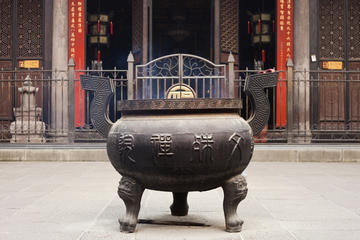 Wenshu Temple
Wenshu Temple Located in the northern reaches of Chengdu, Wenshu Temple is often regarded as the best preserved Buddhist temple in the entire city. Originally known as Xinxiang Temple, the Buddhist center was later renamed Wenshu after a 17th century monk who famously inhabited the monastery groun
Wenshu Temple
Wenshu Temple Located in the northern reaches of Chengdu, Wenshu Temple is often regarded as the best preserved Buddhist temple in the entire city. Originally known as Xinxiang Temple, the Buddhist center was later renamed Wenshu after a 17th century monk who famously inhabited the monastery groun
-
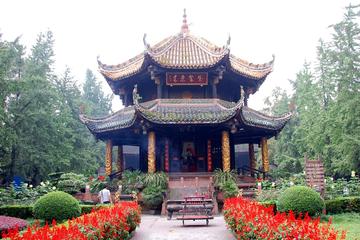 Qingyang Palace
Qingyang Palace An early Tang Dynasty classic, Qingyang Palace is considered to be one of the oldest and most important Taoist temples in all of China due to its location near the boyhood home of Lao-Tzu, the father of Taoism.This palace is often referred to as the “Green Ram Temple,” the “Green R
Qingyang Palace
Qingyang Palace An early Tang Dynasty classic, Qingyang Palace is considered to be one of the oldest and most important Taoist temples in all of China due to its location near the boyhood home of Lao-Tzu, the father of Taoism.This palace is often referred to as the “Green Ram Temple,” the “Green R
-
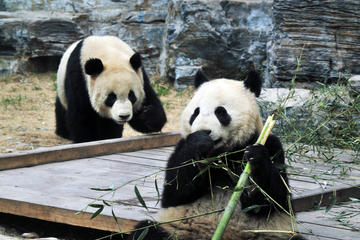 Beijing Zoo
Beijing Zoo Some 500 different species of animals and more than 14,500 furry friends call the 220-acre Beijing Zoo home. This popular destination, which attracts roughly six million conservationists and nature-lovers alike is one of China’s oldest zoos and houses the largest collection of animals
Beijing Zoo
Beijing Zoo Some 500 different species of animals and more than 14,500 furry friends call the 220-acre Beijing Zoo home. This popular destination, which attracts roughly six million conservationists and nature-lovers alike is one of China’s oldest zoos and houses the largest collection of animals
-
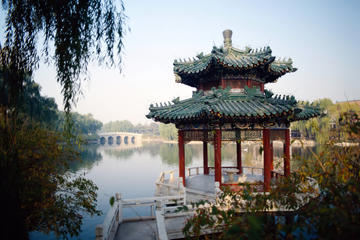 Classical Gardens of Suzhou
Classical Gardens of Suzhou The art of the traditional Chinese garden was popular among wealthy Chinese during the Ming and Qing Dynasties, and nowhere is the classic beauty of these gardens more evident than in Suzhou, a city located 50 miles (81 kilometers) northwest of Shanghai.Once the private
Classical Gardens of Suzhou
Classical Gardens of Suzhou The art of the traditional Chinese garden was popular among wealthy Chinese during the Ming and Qing Dynasties, and nowhere is the classic beauty of these gardens more evident than in Suzhou, a city located 50 miles (81 kilometers) northwest of Shanghai.Once the private
-
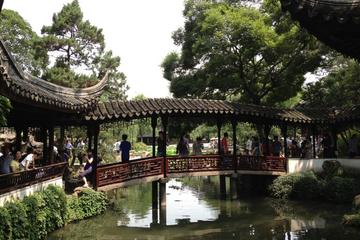 Suzhou and Zhouzhuang
Suzhou and Zhouzhuang If Shanghais ultramodern skyline has you pining for the China of old kung fu movies, a day trip or weekend in Suzhou or Zhouzhuang might be in order. Both described individually as the Venice of China, the two cities lantern-lined canals and traditional architecture make them
Suzhou and Zhouzhuang
Suzhou and Zhouzhuang If Shanghais ultramodern skyline has you pining for the China of old kung fu movies, a day trip or weekend in Suzhou or Zhouzhuang might be in order. Both described individually as the Venice of China, the two cities lantern-lined canals and traditional architecture make them
-
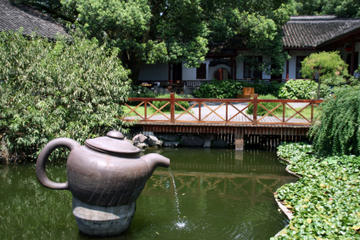 Meijiawu Tea Village
Meijiawu Tea Village Located 30 minutes outside of Hangzhou in the rural foothills of the West Lake district the Meijiawu Tea Village is an entire township devoted to the cultivation and heritage of Xihu Longjing Tea. Also known as “Dragon Well Tea,” everything surrounding this revered type of gre
Meijiawu Tea Village
Meijiawu Tea Village Located 30 minutes outside of Hangzhou in the rural foothills of the West Lake district the Meijiawu Tea Village is an entire township devoted to the cultivation and heritage of Xihu Longjing Tea. Also known as “Dragon Well Tea,” everything surrounding this revered type of gre
-
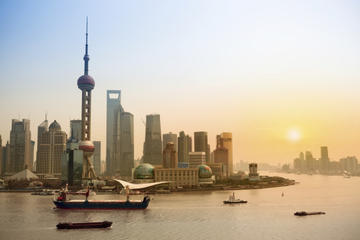 Shanghai Cruise Port
Shanghai Cruise Port On the map for over a thousand years, Shanghai didn’t rise to prominence until the 1840s, but was the largest city in China by the 1930s. Today, it is the largest seaport in China and the third largest in the world. With a port that can accommodate three large oceanliners at a
Shanghai Cruise Port
Shanghai Cruise Port On the map for over a thousand years, Shanghai didn’t rise to prominence until the 1840s, but was the largest city in China by the 1930s. Today, it is the largest seaport in China and the third largest in the world. With a port that can accommodate three large oceanliners at a
Total
2381 -travel
FirstPage PreviousPage NextPage LastPage CurrentPage:
8/120 20-travel/Page GoTo Page:
 Longmen Grottoes
Longmen Grottoes Artists from the Northern Wei dynasty began carving in the Longmen Grottoes in the year 494 and continued to do so for some 200 years. Today, the UNESCO-listed caves contain more than 100,000 Buddhist statues and images—one of the best and last remaining collections of Buddhist ro
Longmen Grottoes
Longmen Grottoes Artists from the Northern Wei dynasty began carving in the Longmen Grottoes in the year 494 and continued to do so for some 200 years. Today, the UNESCO-listed caves contain more than 100,000 Buddhist statues and images—one of the best and last remaining collections of Buddhist ro
 Lhasa
Lhasa Few places in the world inspire a sense of mystery and magic quite like the Tibetan capital of Lhasa. Closed off to outside visitors for generations, it has only been within the last 50 years that Tibet’s 12,000-foot (3,657.6-meter) capital has been accessible to a handful of lucky visitors.
Lhasa
Lhasa Few places in the world inspire a sense of mystery and magic quite like the Tibetan capital of Lhasa. Closed off to outside visitors for generations, it has only been within the last 50 years that Tibet’s 12,000-foot (3,657.6-meter) capital has been accessible to a handful of lucky visitors.
 Kong Family Mansion
Kong Family Mansion Located in Qufu city, the Kong Family Mansion was the residence of the descendants of Confucius. Situated just to the east of the Confucius Temple, the Kong Family Mansion was the aristocratic home from where the family tended to the Confucian sites in Qufu. It was the largest
Kong Family Mansion
Kong Family Mansion Located in Qufu city, the Kong Family Mansion was the residence of the descendants of Confucius. Situated just to the east of the Confucius Temple, the Kong Family Mansion was the aristocratic home from where the family tended to the Confucian sites in Qufu. It was the largest
 Hengshan Hanging Temple (Xuankong si)
Hengshan Hanging Temple (Xuankong si) The Hanging Temple is built into the cliff-side of the mighty Hengshan (Mount Heng) near Datong city in Shanxi Province. Held up by oak stilts slotted into holes chiselled out from the rock, the rest of the structure that supports the temple is hidden inside t
Hengshan Hanging Temple (Xuankong si)
Hengshan Hanging Temple (Xuankong si) The Hanging Temple is built into the cliff-side of the mighty Hengshan (Mount Heng) near Datong city in Shanxi Province. Held up by oak stilts slotted into holes chiselled out from the rock, the rest of the structure that supports the temple is hidden inside t
 Shanghai Zoo (Shanghai Dongwu Yuan)
Shanghai Zoo (Shanghai Dongwu Yuan) The Shanghai Zoo (Shanghai Dongwu Yuan), one of the best zoological parks in China, is home to some 6,000 animals representing 600 species, many of them indigenous to China. Apart from the typical zoo favorites (giraffes, elephants and seals), the Giant Pandas a
Shanghai Zoo (Shanghai Dongwu Yuan)
Shanghai Zoo (Shanghai Dongwu Yuan) The Shanghai Zoo (Shanghai Dongwu Yuan), one of the best zoological parks in China, is home to some 6,000 animals representing 600 species, many of them indigenous to China. Apart from the typical zoo favorites (giraffes, elephants and seals), the Giant Pandas a
 Shanghai Xin Tian Di
Shanghai Xin Tian Di Xin Tian Di (Xintiandi) is a sleekly restored area of Shanghai, where the more successful of the citys young come to play. Its also a popular strolling area for tourists, who like to check out the 19th century architecture. The district abounds in shikumen, stone houses that
Shanghai Xin Tian Di
Shanghai Xin Tian Di Xin Tian Di (Xintiandi) is a sleekly restored area of Shanghai, where the more successful of the citys young come to play. Its also a popular strolling area for tourists, who like to check out the 19th century architecture. The district abounds in shikumen, stone houses that
 Shaanxi History Museum
Shaanxi History Museum The city of Xian is of inestimable significance in the history of China, having long been a cultural powerhouse as well as the capital of numerous dynasties. The Shaanxi History Museum, a modern building echoing classic Tang Dynasty architecture, offers a time-traveling tour
Shaanxi History Museum
Shaanxi History Museum The city of Xian is of inestimable significance in the history of China, having long been a cultural powerhouse as well as the capital of numerous dynasties. The Shaanxi History Museum, a modern building echoing classic Tang Dynasty architecture, offers a time-traveling tour
 Huangpu River
Huangpu River The Huangpu River, extending over 71 miles (113 kilometers), flows through the middle of Shanghai’s, dividing the city into two parts – Pudong to the east and Puxi to the west. The port where the river empties into the East China Sea has now become the largest port in China and in 20
Huangpu River
Huangpu River The Huangpu River, extending over 71 miles (113 kilometers), flows through the middle of Shanghai’s, dividing the city into two parts – Pudong to the east and Puxi to the west. The port where the river empties into the East China Sea has now become the largest port in China and in 20
 Pearl River
Pearl River The Pearl River stretches for 1,376 miles (2,214 kilometers) from Xi Jiang to the Pearl River Delta where it pours into the South China Sea. It’s the third longest river in China and the second largest by volume. According to local legend, the river got its name from a huge boulder in
Pearl River
Pearl River The Pearl River stretches for 1,376 miles (2,214 kilometers) from Xi Jiang to the Pearl River Delta where it pours into the South China Sea. It’s the third longest river in China and the second largest by volume. According to local legend, the river got its name from a huge boulder in
 Mt Tai (Tai Shan)
Mt Tai (Tai Shan) Mount Tai (or Tai Shan) is a majestic mountain located in Shandong Province. It spans two cities – Tai’an and Jinan – and is the principal mountain among the five most significant in China. In 1987, Mount Tai was listed as a Cultural and Natural World Heritage Site and later in 2
Mt Tai (Tai Shan)
Mt Tai (Tai Shan) Mount Tai (or Tai Shan) is a majestic mountain located in Shandong Province. It spans two cities – Tai’an and Jinan – and is the principal mountain among the five most significant in China. In 1987, Mount Tai was listed as a Cultural and Natural World Heritage Site and later in 2
 Cemetery of Confucius
Cemetery of Confucius The Cemetery of Confucius contains the tomb erected in memory of Confucius, along with the remains of more than 100,000 of his descendants. Situated just north of the sage’s birthplace of Qufu in Shandong Province, the cemetery sits around two kilometers from the Confucius Te
Cemetery of Confucius
Cemetery of Confucius The Cemetery of Confucius contains the tomb erected in memory of Confucius, along with the remains of more than 100,000 of his descendants. Situated just north of the sage’s birthplace of Qufu in Shandong Province, the cemetery sits around two kilometers from the Confucius Te
 Olympic Green (Olympic Park)
Olympic Green (Olympic Park) In just a few years since Beijing hosted the 2008 Olympic Games, the structures built within the Olympic Green (Olympic Park) have become just as representative of the Chinese capital as the Forbidden City or the Great Wall. While the Olympic Green houses half a dozen
Olympic Green (Olympic Park)
Olympic Green (Olympic Park) In just a few years since Beijing hosted the 2008 Olympic Games, the structures built within the Olympic Green (Olympic Park) have become just as representative of the Chinese capital as the Forbidden City or the Great Wall. While the Olympic Green houses half a dozen
 Sichuan Opera House
Sichuan Opera House For more than 100 years dancers, singers and other performers have been presenting traditional Sichuan operas for travelers and tourists seeking a true cross cultural experience. Divided into two distinct spaces, the VIP Chinese Opera House and the Liyuan Opera House, Sichuan O
Sichuan Opera House
Sichuan Opera House For more than 100 years dancers, singers and other performers have been presenting traditional Sichuan operas for travelers and tourists seeking a true cross cultural experience. Divided into two distinct spaces, the VIP Chinese Opera House and the Liyuan Opera House, Sichuan O
 Wenshu Temple
Wenshu Temple Located in the northern reaches of Chengdu, Wenshu Temple is often regarded as the best preserved Buddhist temple in the entire city. Originally known as Xinxiang Temple, the Buddhist center was later renamed Wenshu after a 17th century monk who famously inhabited the monastery groun
Wenshu Temple
Wenshu Temple Located in the northern reaches of Chengdu, Wenshu Temple is often regarded as the best preserved Buddhist temple in the entire city. Originally known as Xinxiang Temple, the Buddhist center was later renamed Wenshu after a 17th century monk who famously inhabited the monastery groun
 Qingyang Palace
Qingyang Palace An early Tang Dynasty classic, Qingyang Palace is considered to be one of the oldest and most important Taoist temples in all of China due to its location near the boyhood home of Lao-Tzu, the father of Taoism.This palace is often referred to as the “Green Ram Temple,” the “Green R
Qingyang Palace
Qingyang Palace An early Tang Dynasty classic, Qingyang Palace is considered to be one of the oldest and most important Taoist temples in all of China due to its location near the boyhood home of Lao-Tzu, the father of Taoism.This palace is often referred to as the “Green Ram Temple,” the “Green R
 Beijing Zoo
Beijing Zoo Some 500 different species of animals and more than 14,500 furry friends call the 220-acre Beijing Zoo home. This popular destination, which attracts roughly six million conservationists and nature-lovers alike is one of China’s oldest zoos and houses the largest collection of animals
Beijing Zoo
Beijing Zoo Some 500 different species of animals and more than 14,500 furry friends call the 220-acre Beijing Zoo home. This popular destination, which attracts roughly six million conservationists and nature-lovers alike is one of China’s oldest zoos and houses the largest collection of animals
 Classical Gardens of Suzhou
Classical Gardens of Suzhou The art of the traditional Chinese garden was popular among wealthy Chinese during the Ming and Qing Dynasties, and nowhere is the classic beauty of these gardens more evident than in Suzhou, a city located 50 miles (81 kilometers) northwest of Shanghai.Once the private
Classical Gardens of Suzhou
Classical Gardens of Suzhou The art of the traditional Chinese garden was popular among wealthy Chinese during the Ming and Qing Dynasties, and nowhere is the classic beauty of these gardens more evident than in Suzhou, a city located 50 miles (81 kilometers) northwest of Shanghai.Once the private
 Suzhou and Zhouzhuang
Suzhou and Zhouzhuang If Shanghais ultramodern skyline has you pining for the China of old kung fu movies, a day trip or weekend in Suzhou or Zhouzhuang might be in order. Both described individually as the Venice of China, the two cities lantern-lined canals and traditional architecture make them
Suzhou and Zhouzhuang
Suzhou and Zhouzhuang If Shanghais ultramodern skyline has you pining for the China of old kung fu movies, a day trip or weekend in Suzhou or Zhouzhuang might be in order. Both described individually as the Venice of China, the two cities lantern-lined canals and traditional architecture make them
 Meijiawu Tea Village
Meijiawu Tea Village Located 30 minutes outside of Hangzhou in the rural foothills of the West Lake district the Meijiawu Tea Village is an entire township devoted to the cultivation and heritage of Xihu Longjing Tea. Also known as “Dragon Well Tea,” everything surrounding this revered type of gre
Meijiawu Tea Village
Meijiawu Tea Village Located 30 minutes outside of Hangzhou in the rural foothills of the West Lake district the Meijiawu Tea Village is an entire township devoted to the cultivation and heritage of Xihu Longjing Tea. Also known as “Dragon Well Tea,” everything surrounding this revered type of gre
 Shanghai Cruise Port
Shanghai Cruise Port On the map for over a thousand years, Shanghai didn’t rise to prominence until the 1840s, but was the largest city in China by the 1930s. Today, it is the largest seaport in China and the third largest in the world. With a port that can accommodate three large oceanliners at a
Shanghai Cruise Port
Shanghai Cruise Port On the map for over a thousand years, Shanghai didn’t rise to prominence until the 1840s, but was the largest city in China by the 1930s. Today, it is the largest seaport in China and the third largest in the world. With a port that can accommodate three large oceanliners at a